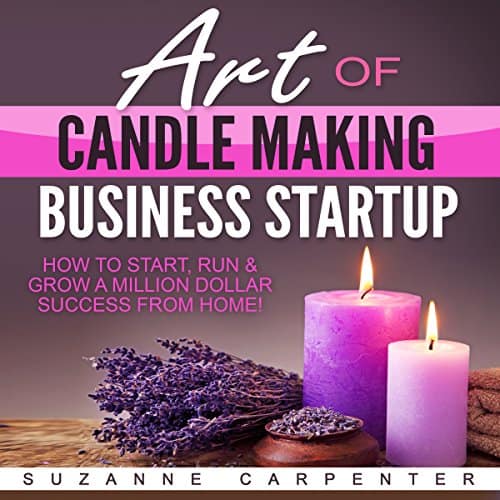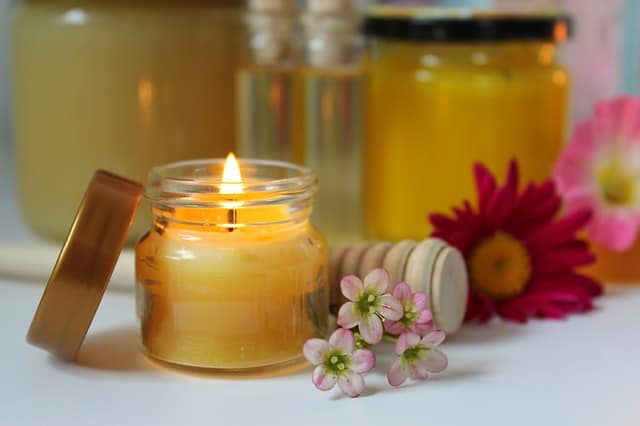When it comes to selecting the best wax for your candle there are many factors that affect our decision so it’s not as cut and dried as we would believe.
Some of us may likely choose a wax type on our budget meaning paraffin wax will be a likely option, whereas some of us may prefer a more natural option such as coconut wax and most of us will likely choose a balance of the two by choosing soy wax
Take a look at the chart below, this can help you select the best wax type according to your needs
Wax Comparison Chart
| Price | Accessibility | Scent throw | Color | Burn rate | Pouring temp °F | |
| Paraffin Wax | $ | 10/10 | excellent | none | fast | 170-180 |
| Palm Wax | $$ | 9/10 | good | none | very slow | 190-210 |
| Soy Wax | $$ | 8/10 | good | none | slow | 135-160 |
| Beeswax | $$$ | 8/10 | average | natural yellow | very slow | 155-160 |
| Coconut Wax | $$$$ | 6/10 | excellent | none | very slow | 120 to 165 |
If the chart does not help you in choosing which wax would be most suitable for you we have included a brief description of each wax type along with some characteristics to aid you, For candle burn rates in more detail try this article here which can help you.
Paraffin wax
Paraffin wax is one of the most versatile and widely utilized types of wax in today’s world. It is also referred to as plain or straight wax, which refers to wax that does not include any additives whatsoever.
Various melt points are available to accommodate a wide variety of candle styles, including containers, votives, and pillars.
The vast majority of commercially available candles available for purchase in shops today are composed of paraffin. It is a by-product of the crude oil refining process, and more eco-friendly individuals typically shun it as a result, despite the fact that it is readily available and inexpensive.
Palm Wax
Palm wax is made by hydrogenating palm oils and is another 100 percent natural wax. Palm wax is produced from the fruit of palm oil plants, which are native to Southeast Asia and South America. Palm oil is a renewable resource that takes a lot of time and effort to extract and transform into the wax.
Because a crystallizing design (on pillars or containers) or a layering pattern ( on pillars) emerges on the candle’s surface, palm waxes allow you to make candles with distinctive textures.
Palm wax also has a high melting point, candles manufactured from it burn longer and are less expensive.
Soy Wax
Soy wax is a relatively recent addition to the candle-making industry, but it has quickly gained traction due to its excellent price-to-environmental-friendliness ratio. Soy wax was created as a substitute for petroleum-derived paraffin as the desire for greener and more natural candles rose.
It is more natural, but it comes at a price since it is more expensive than soy wax. Soy wax, like paraffin, comes in a wide range of mixes and melting temperatures, however, the most popular soy waxes are candle blends manufactured in tins or jars.
Many soy waxes are combined with other vegetable oils and waxes (such as coconut) (like palm and beeswax). There are also a lot of paraffin/soy mixes available that combine the benefits of both waxes, with soy being more natural and paraffin having a fantastic smell throw and pricing. It’s crucial to note that wax can be classified as a soy blend even if it only contains 51% soy wax.
Beeswax
Beeswax is another all-natural wax that is one of the oldest, with some specimens discovered in Egyptian pyramids. Many people consider it to be the greatest wax for candles.
Beeswax is said to be one of the greatest candle waxes on the market, and it can be used to produce pillars, tapers, votives, and containers. It is also available as beeswax sheets for creating rolling candles; however, due to the decrease in overall density, they tend to burn faster.
Beeswax is a byproduct of the honey-making process generated by bees. Bees produce wax, which is then infused with honey during production. It has a naturally pleasant scent that changes somewhat depending on the flowers or plants on which the bees eat. It is melted and filtered numerous times once it is acquired. Beeswax is available in bricks or slabs, as well as tiny pellets that melt quickly and are easy to measure.
Coconut Wax
Coconut wax is a relatively recent addition to the candle wax family, and we’re seeing an increasing number of candle producers choose it. Coconut wax receives the highest eco-friendly marks as more people become worried about the environment.
It’s obviously more expensive to use, but many people believe it’s worth it because of the wonderful smell throw and even burn rate. In fact, the perfume throw of Coconut Candles is outstanding even when they’re not lit.
Coconuts are a sustainable, high-yield crop, thus harvesting the oil is an organic procedure. Coconut wax candles are luscious and slow-burning.
Wax Blends
Most of the waxes are great for making candles and when you are on the lookout you will come to this conclusion also. Something else we have seen is the wide availability of wax blends too. We cannot really comment too much on this topic as each blend will vary with regards to scent throw, burn time, pouring temperature, and price.
For many of us, these wax blends offer a great compromise if we are looking to create great candles but we want to do them at a lower price point.
If you are looking to get started making candles why not check out these great resources we have written for you
What Equipment Do You Need To Start A Candle Making Business?
Profitable Candle Making Business: Can I Do It? Spoiler:Yes!
Best Candle Making Kits (if you are looking to start small)
Or you could check out this free audiobook trial on Amazon by clicking on the image below to get a better idea of what is needed



